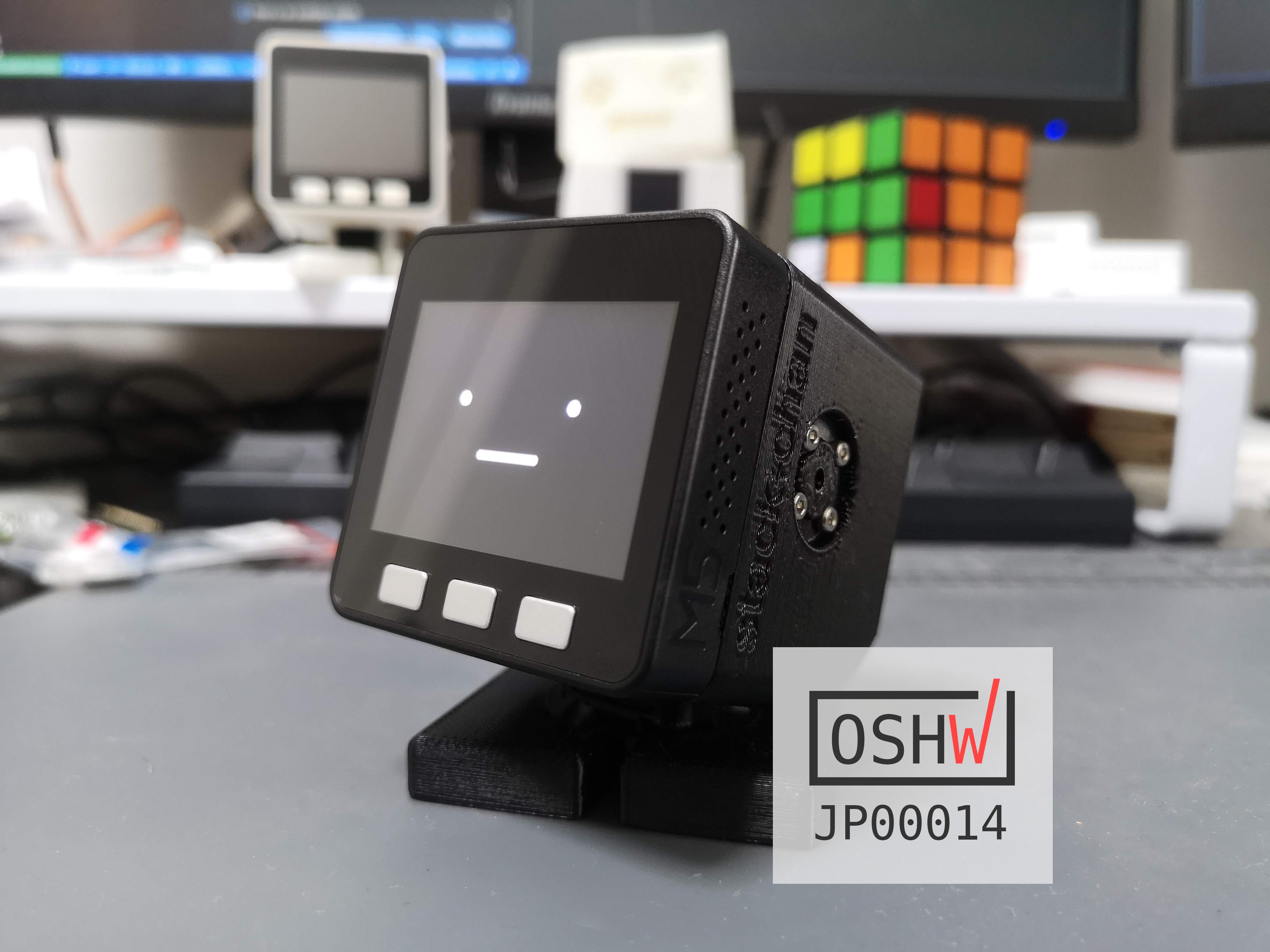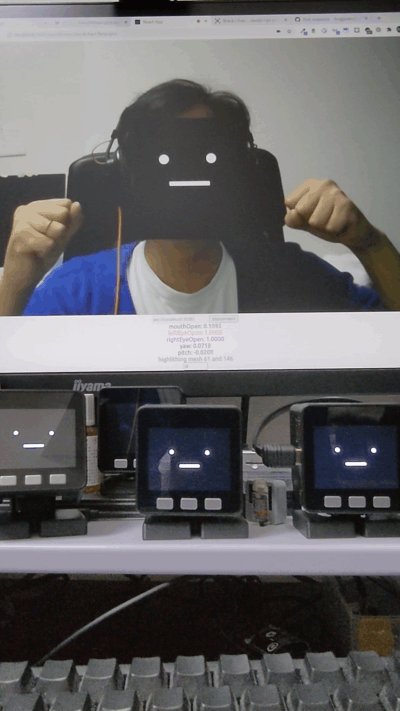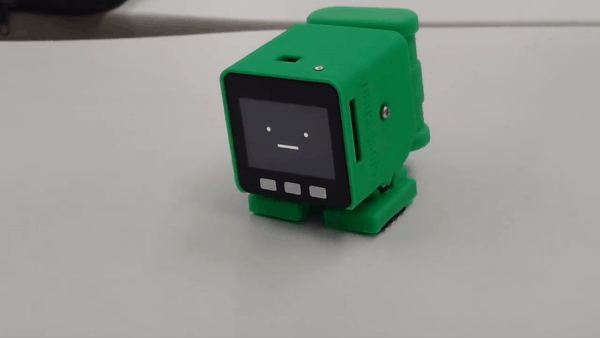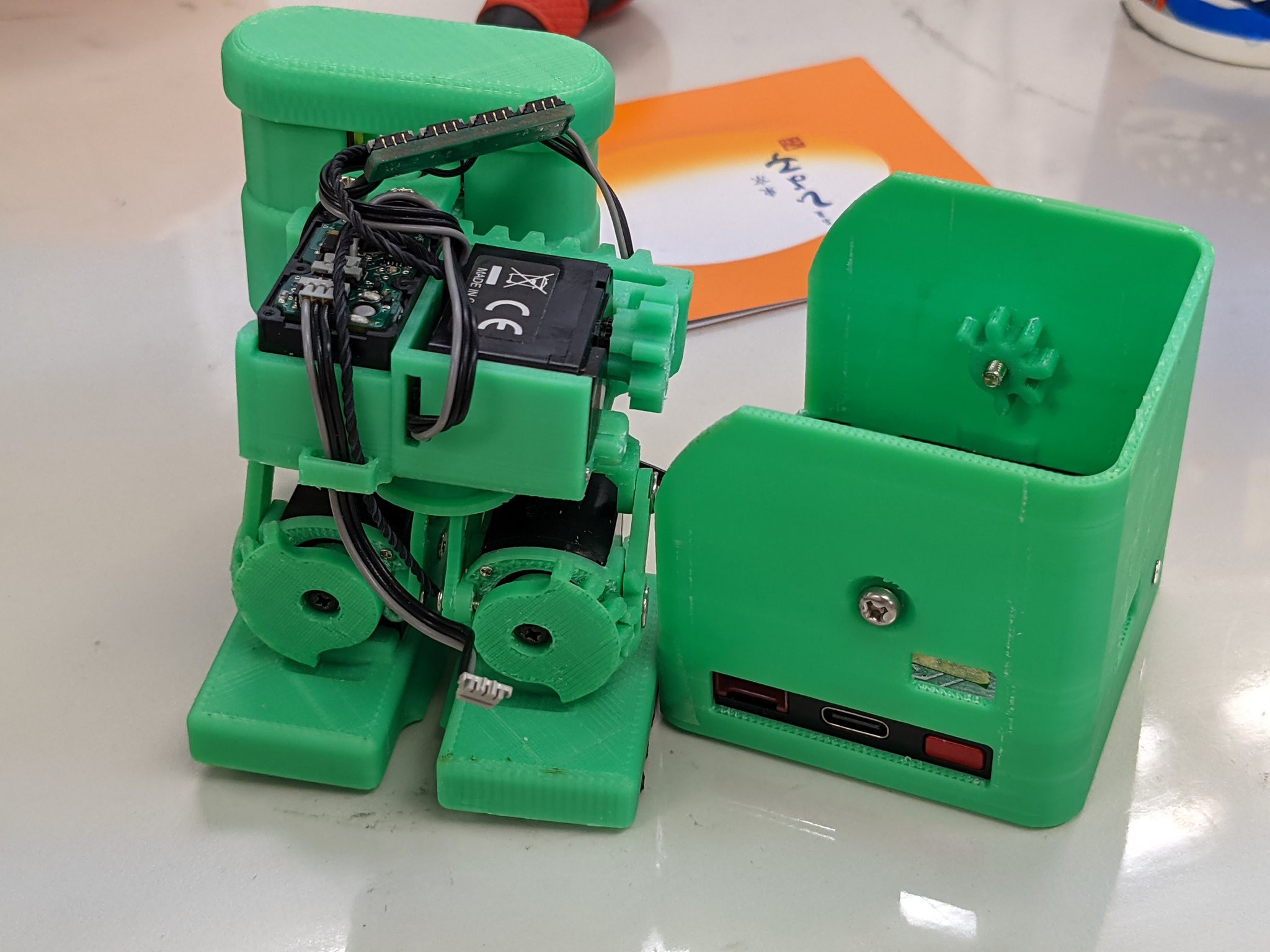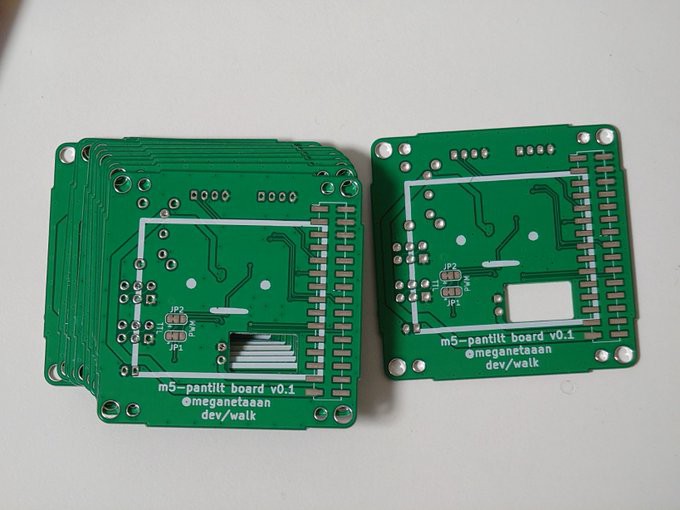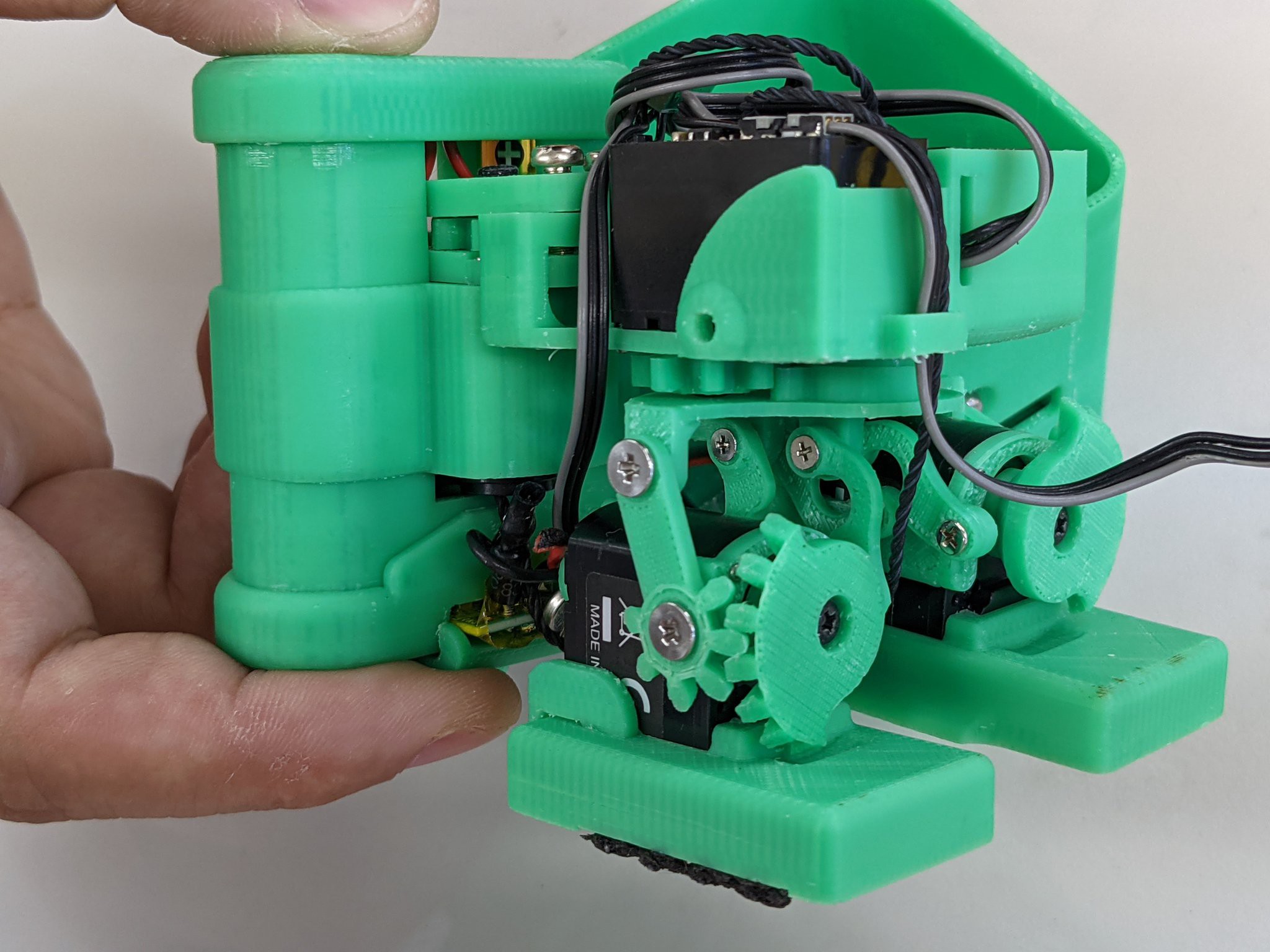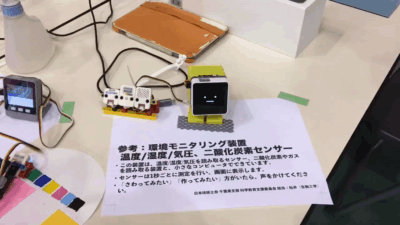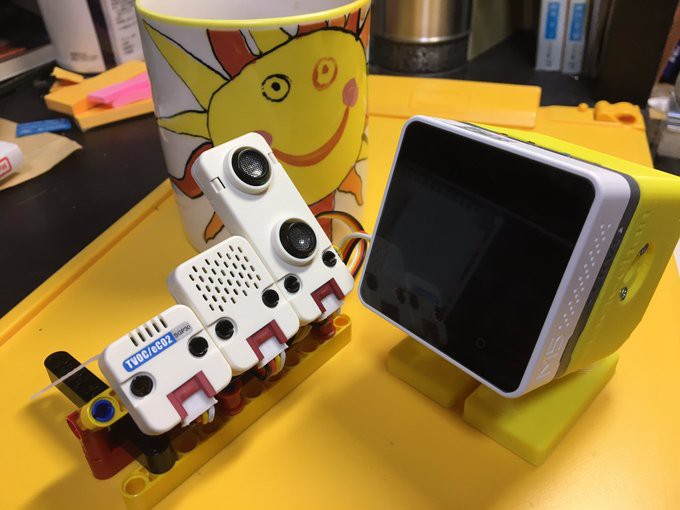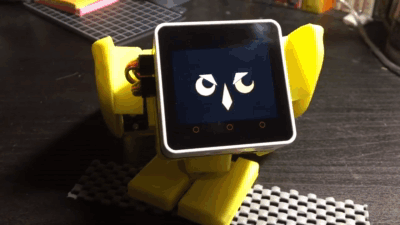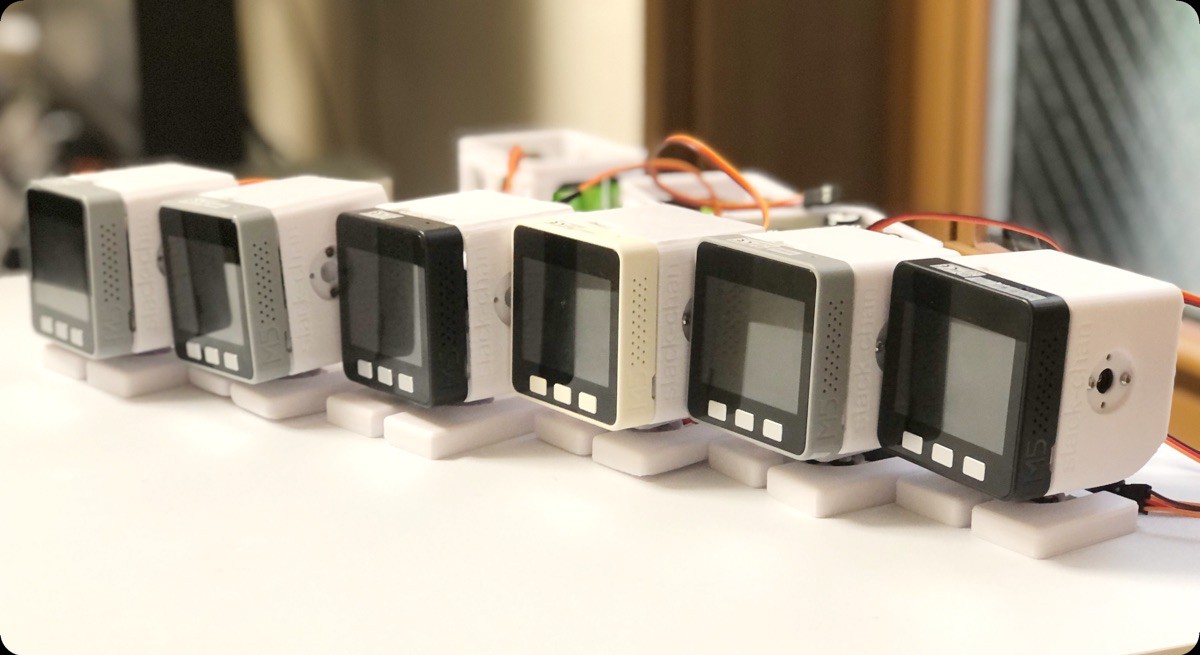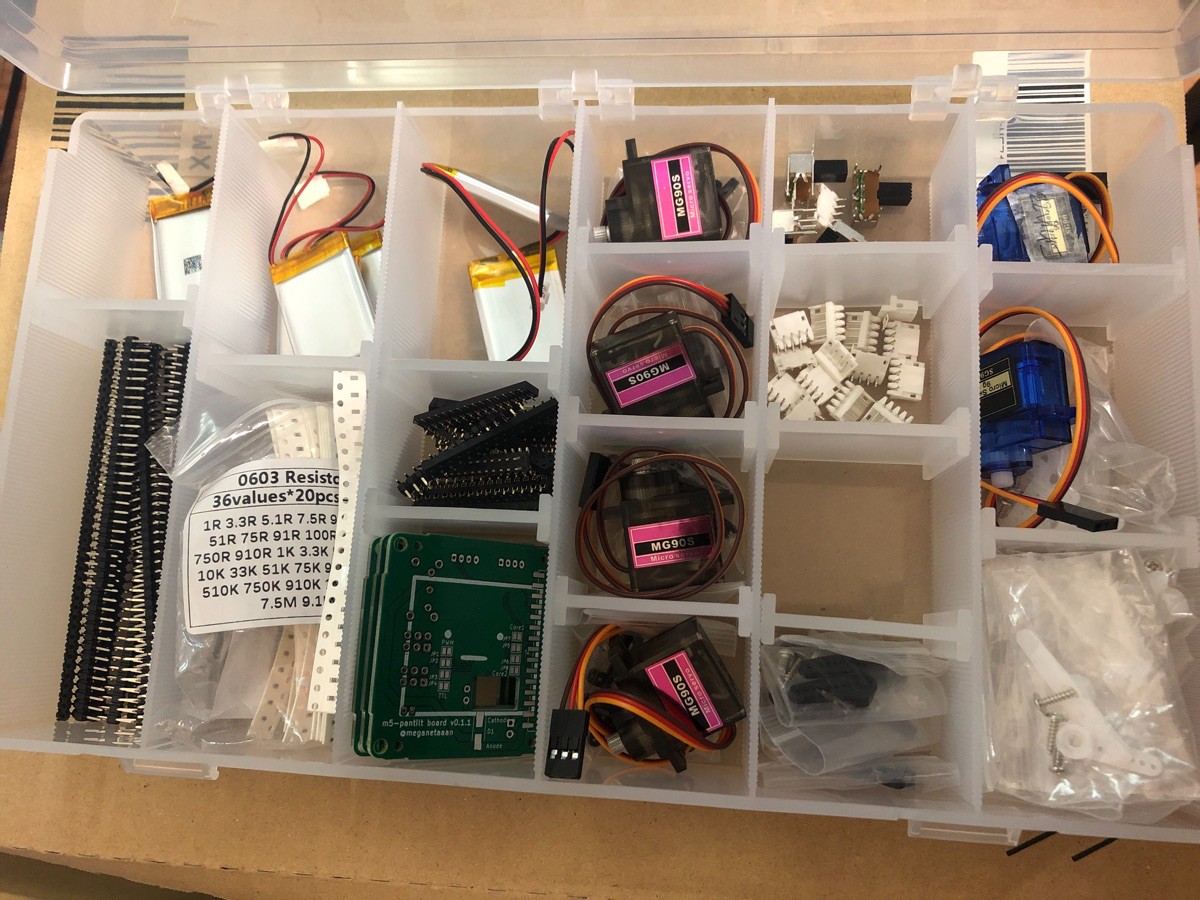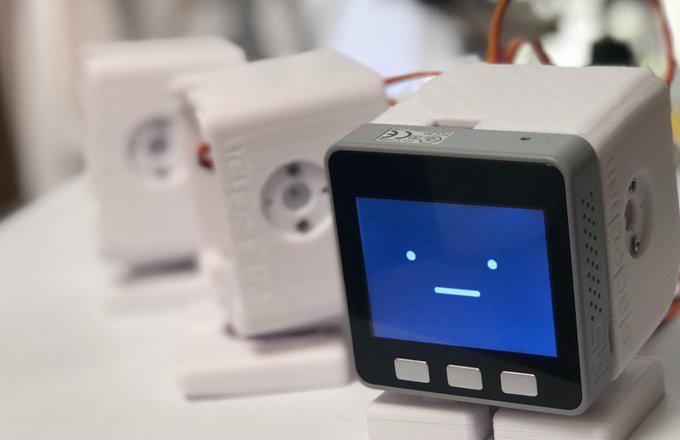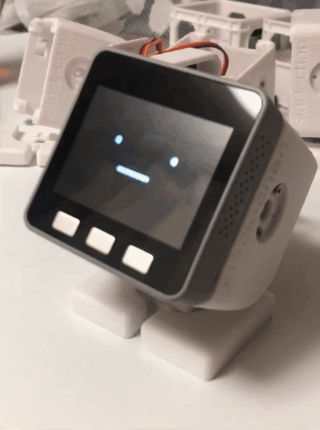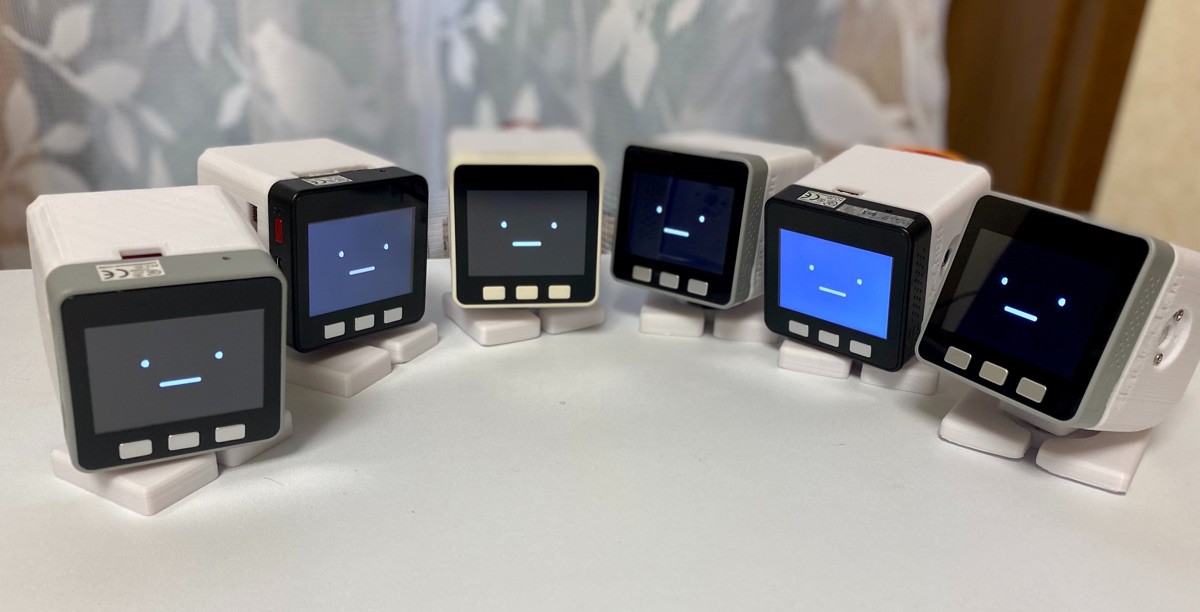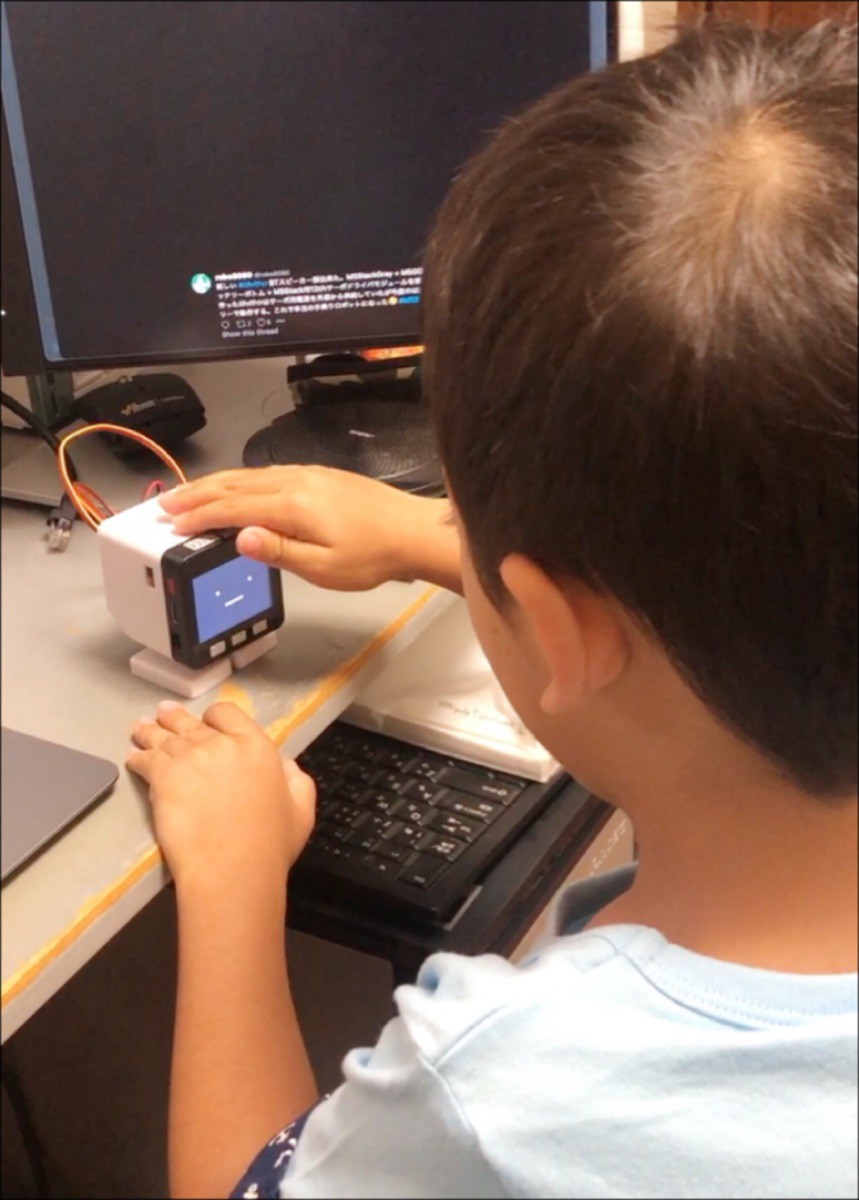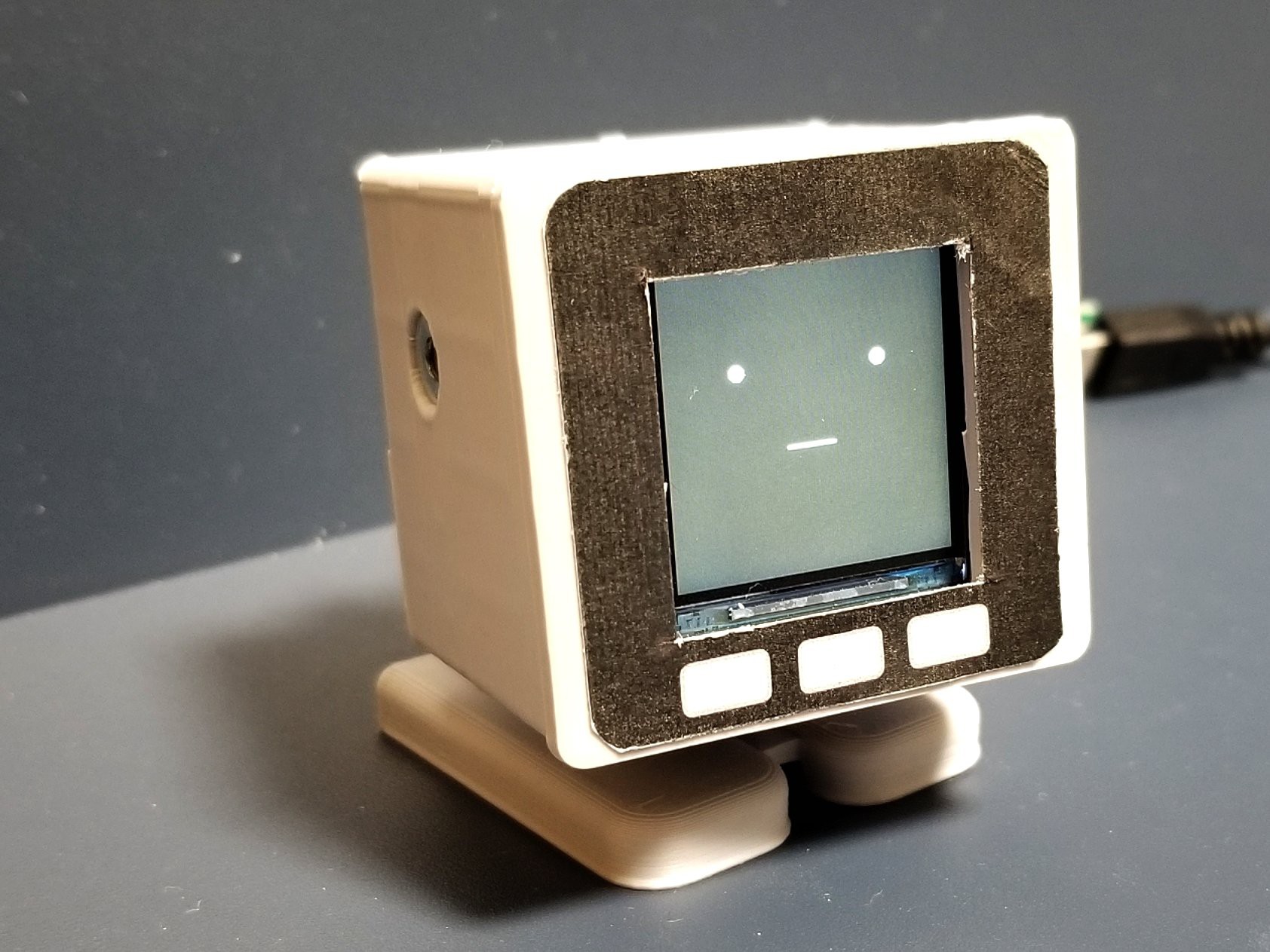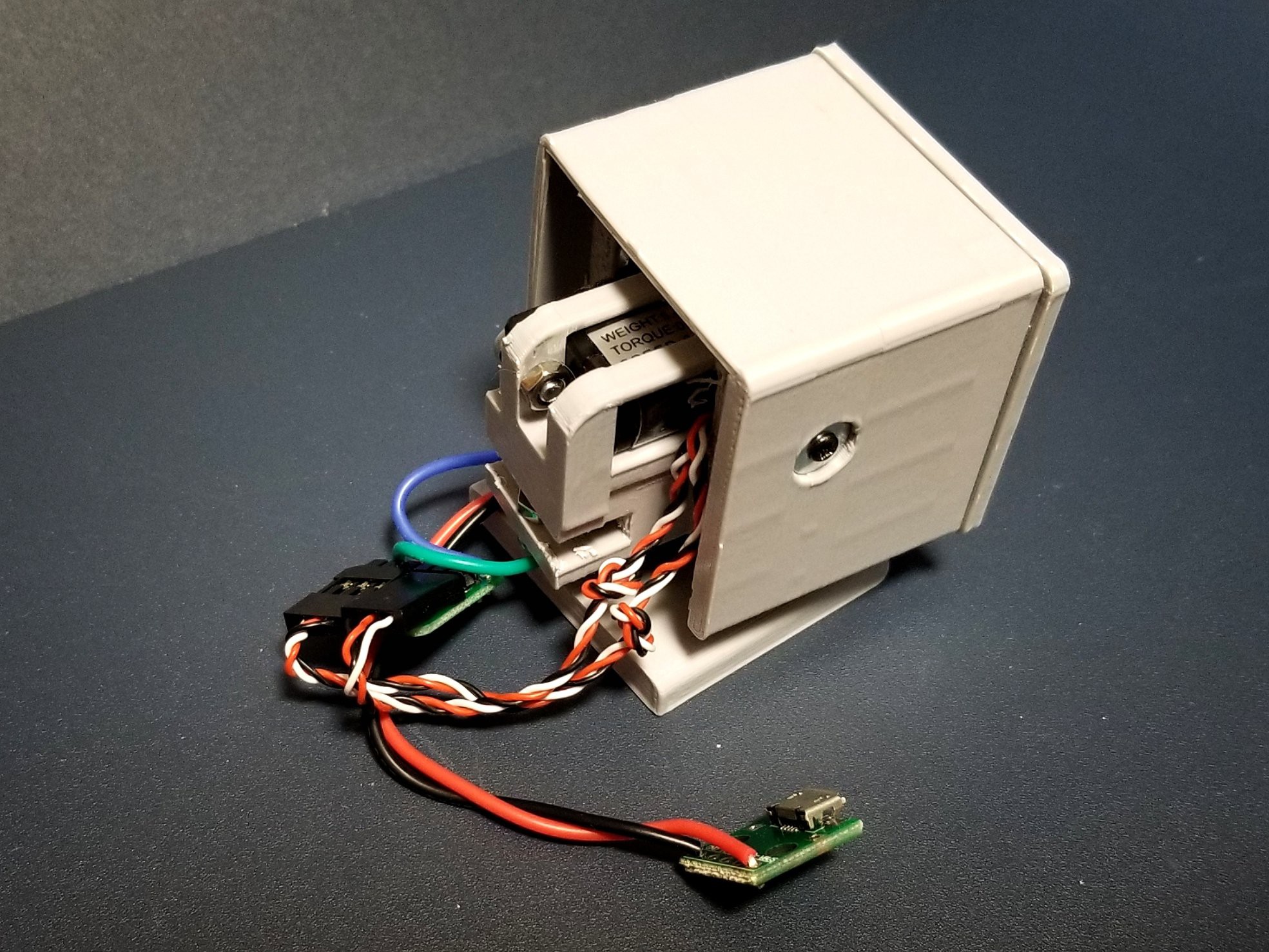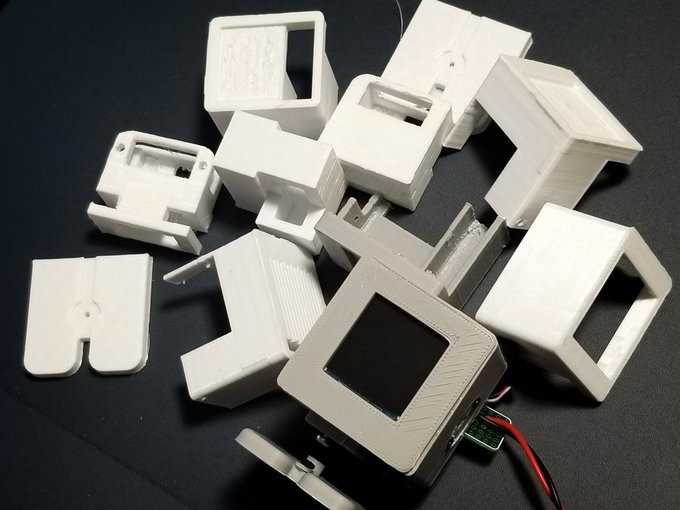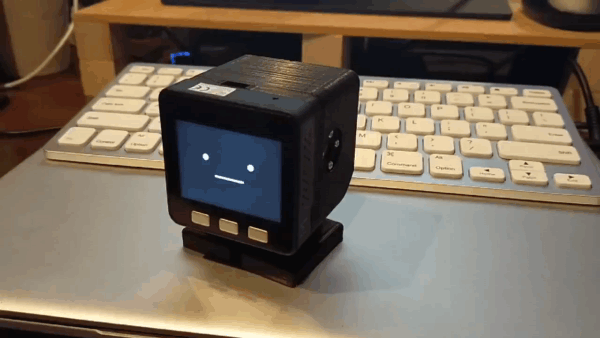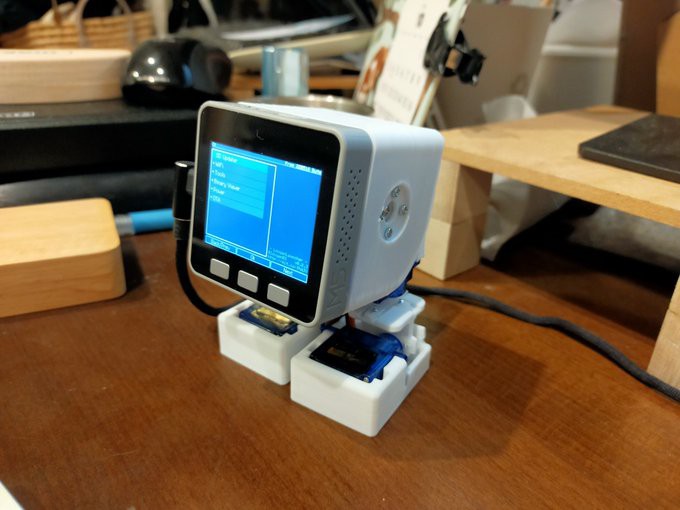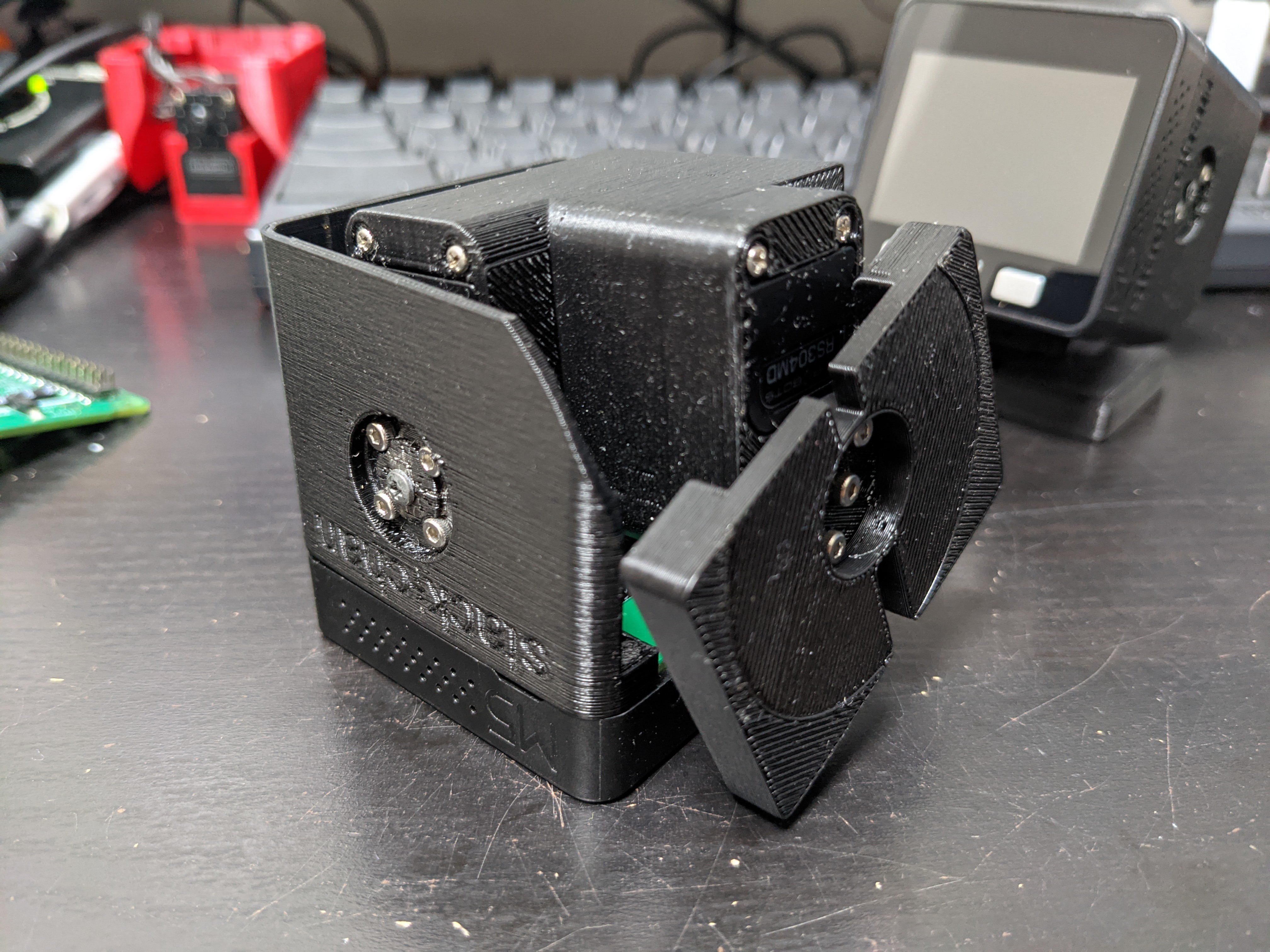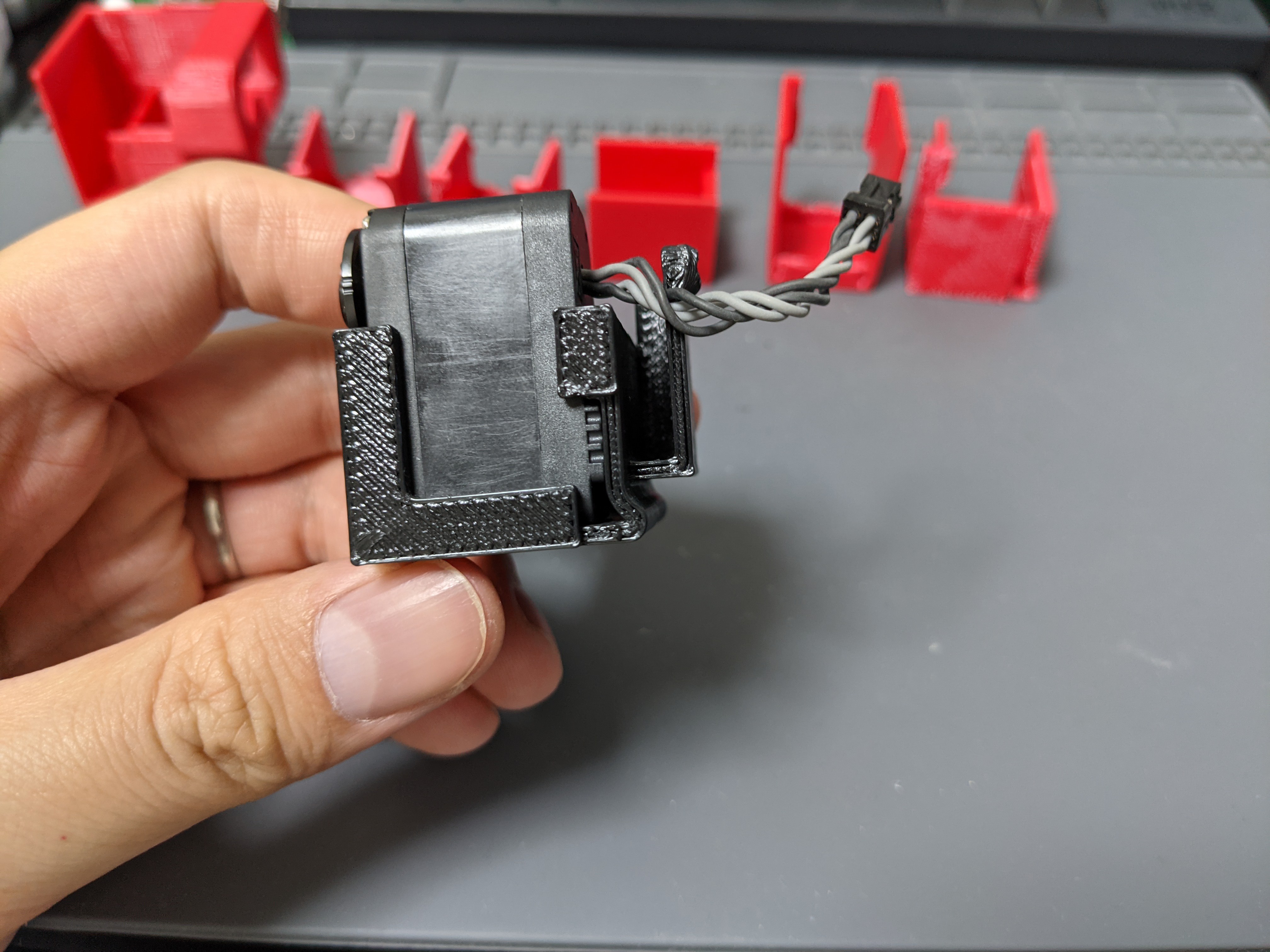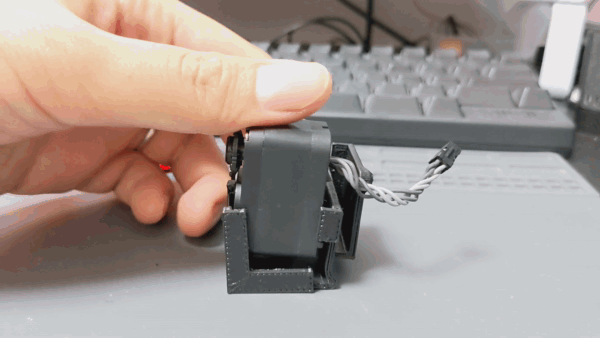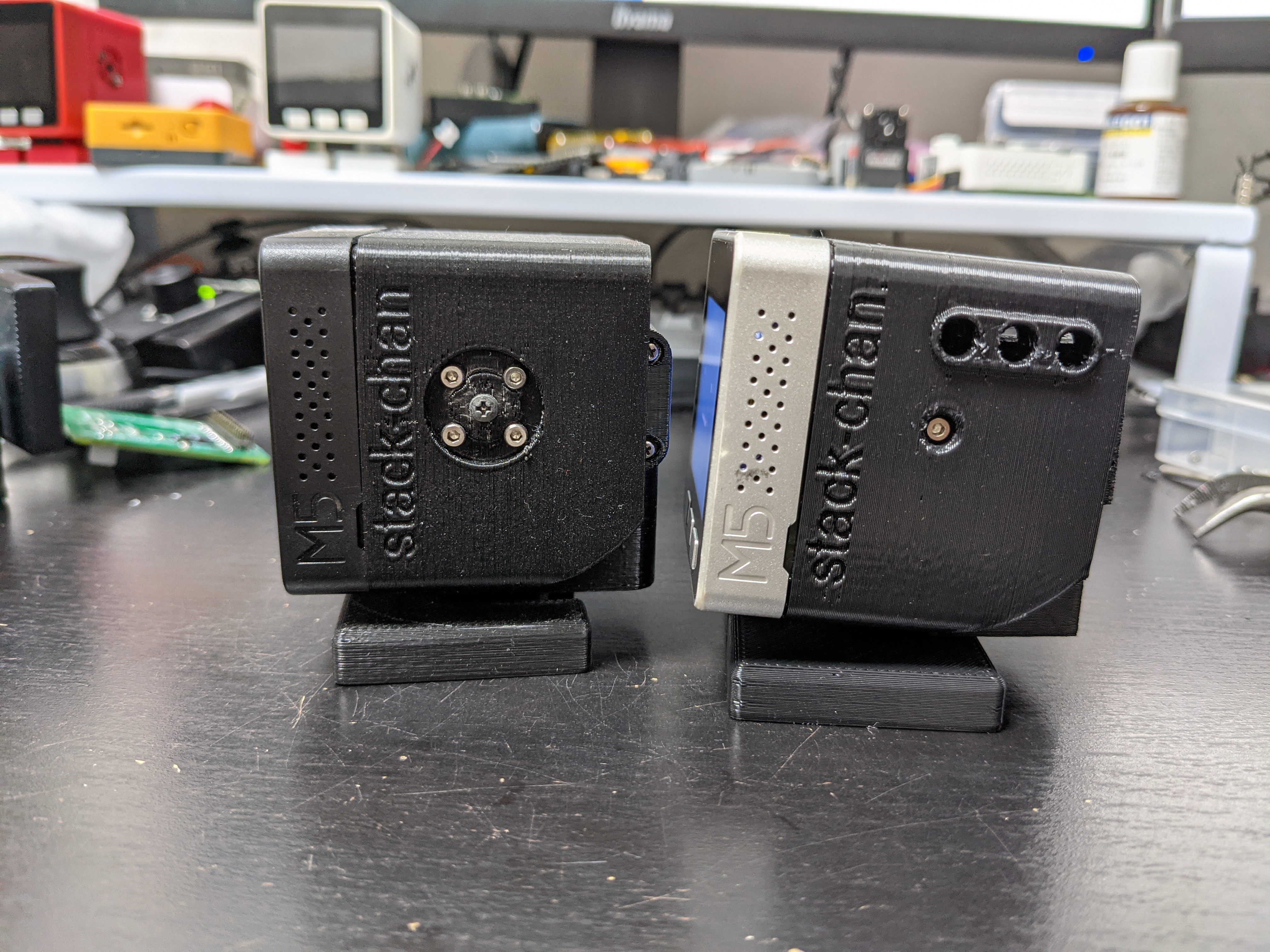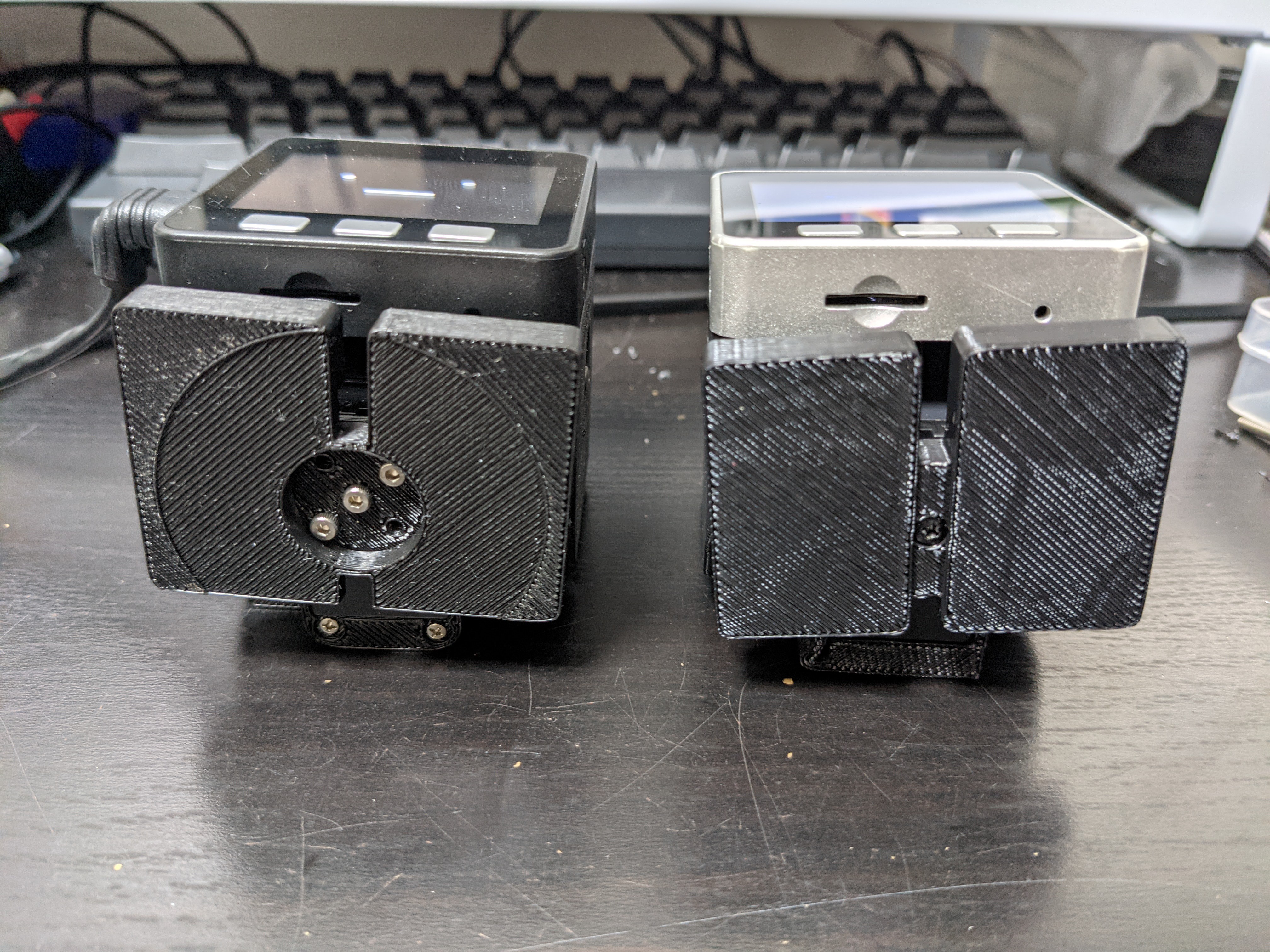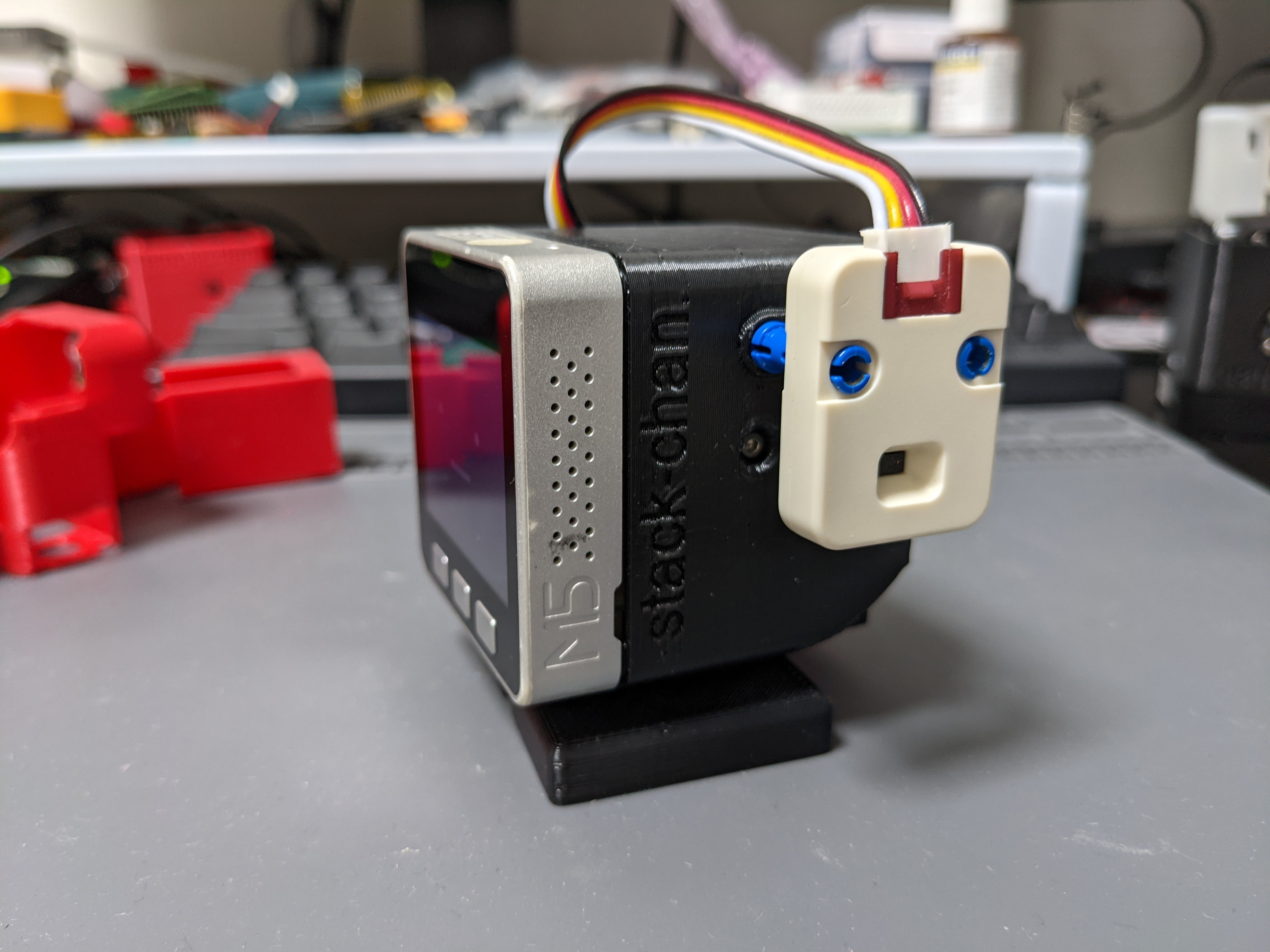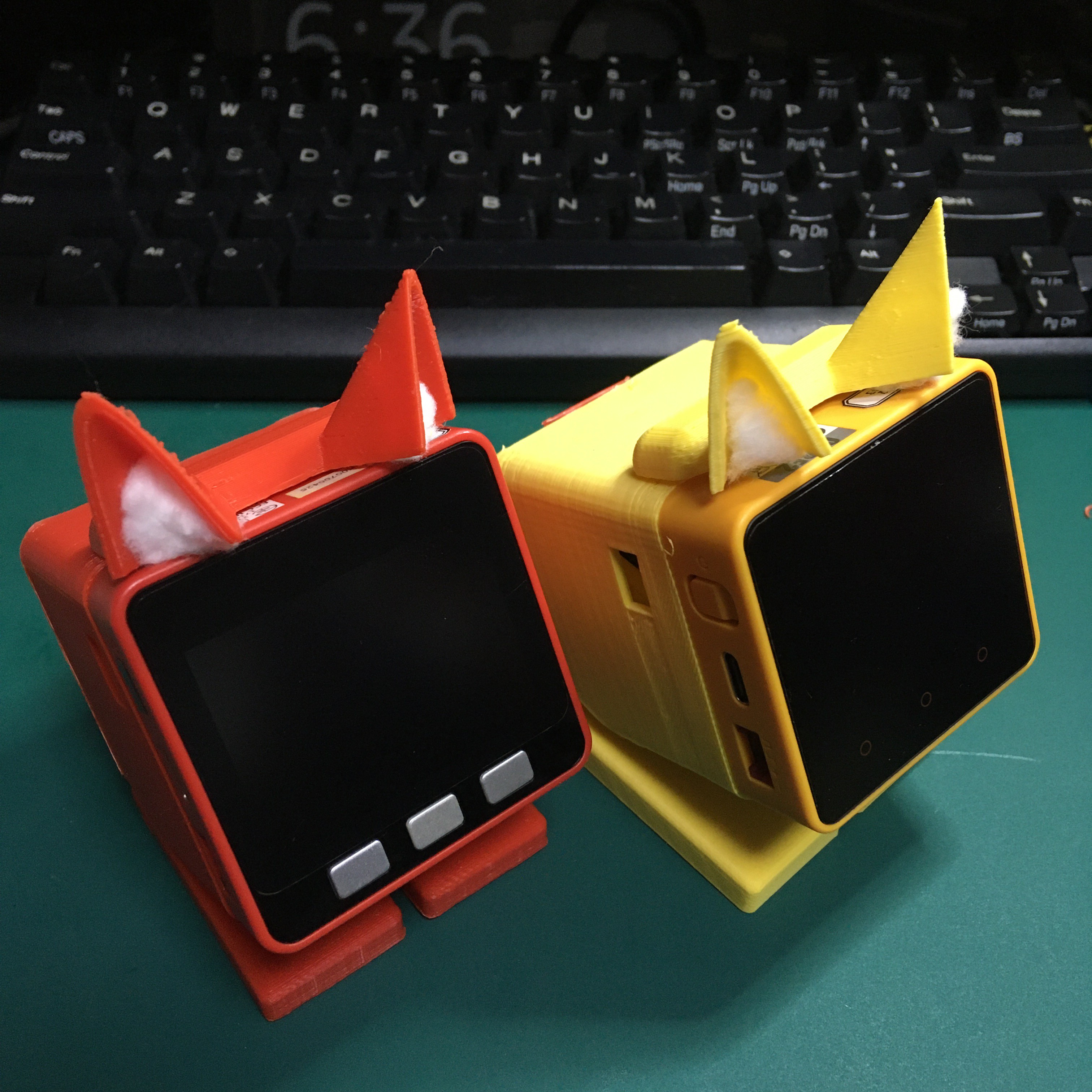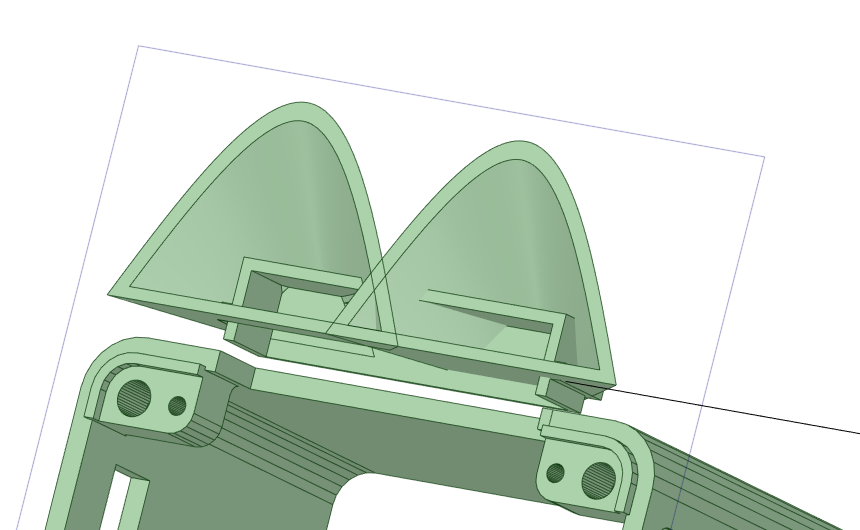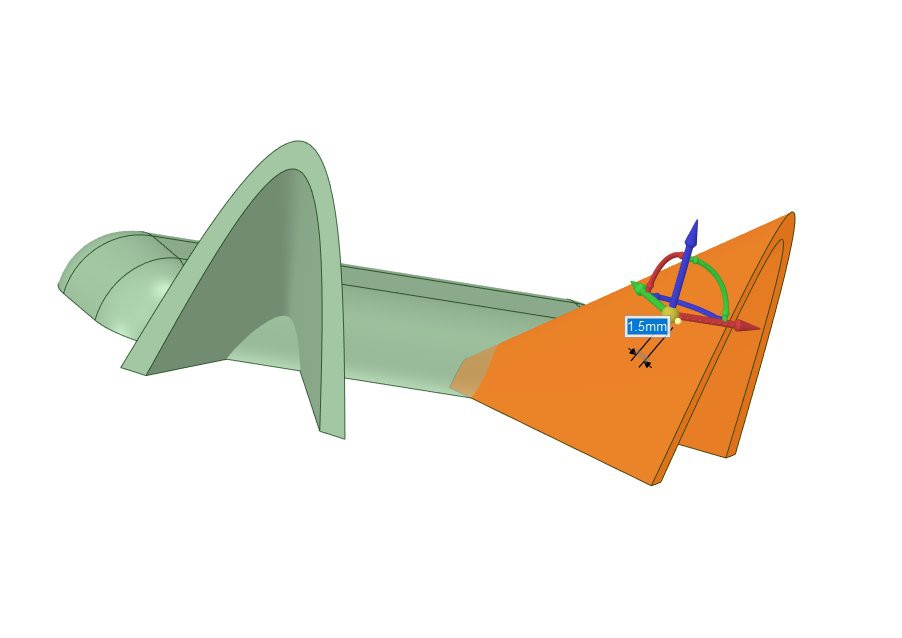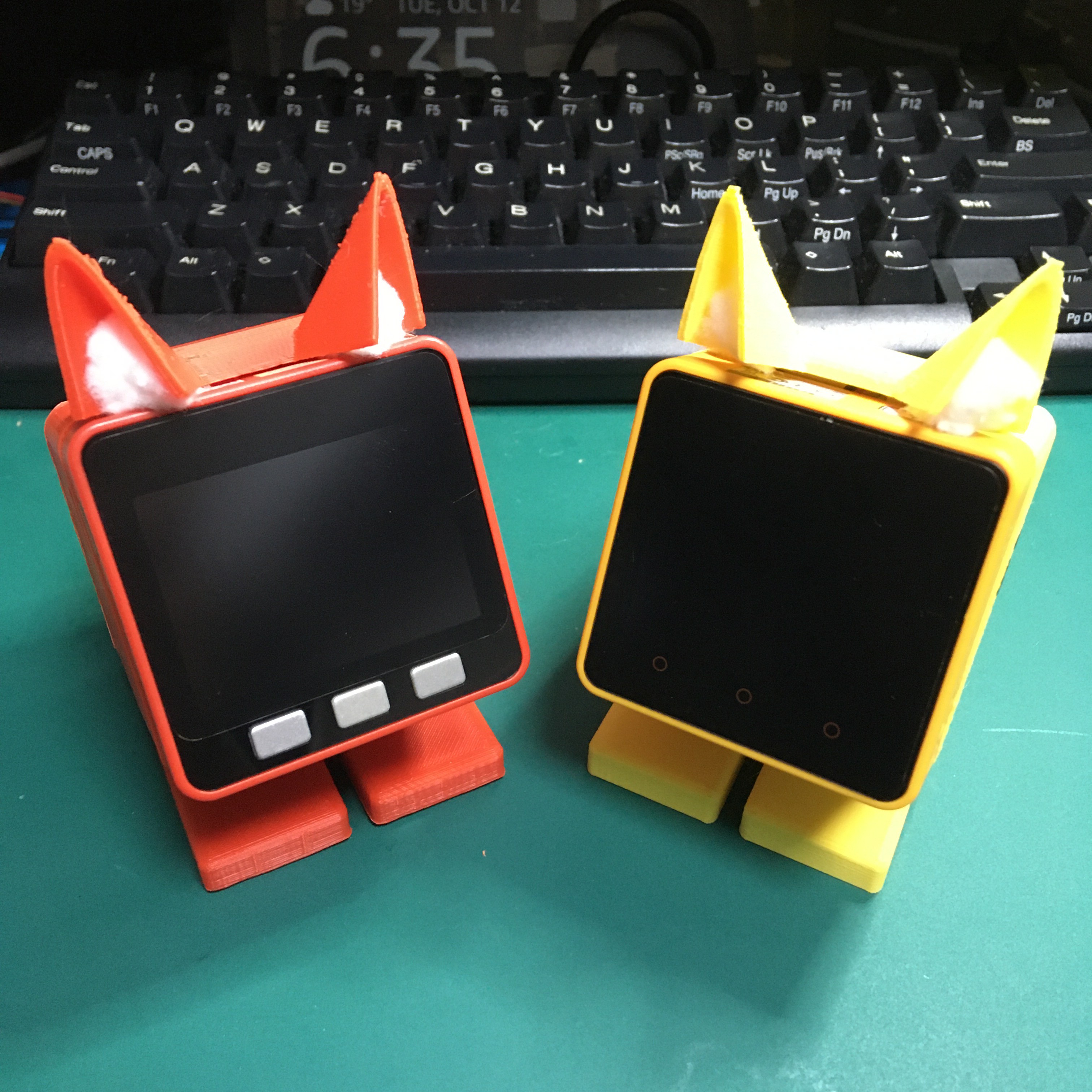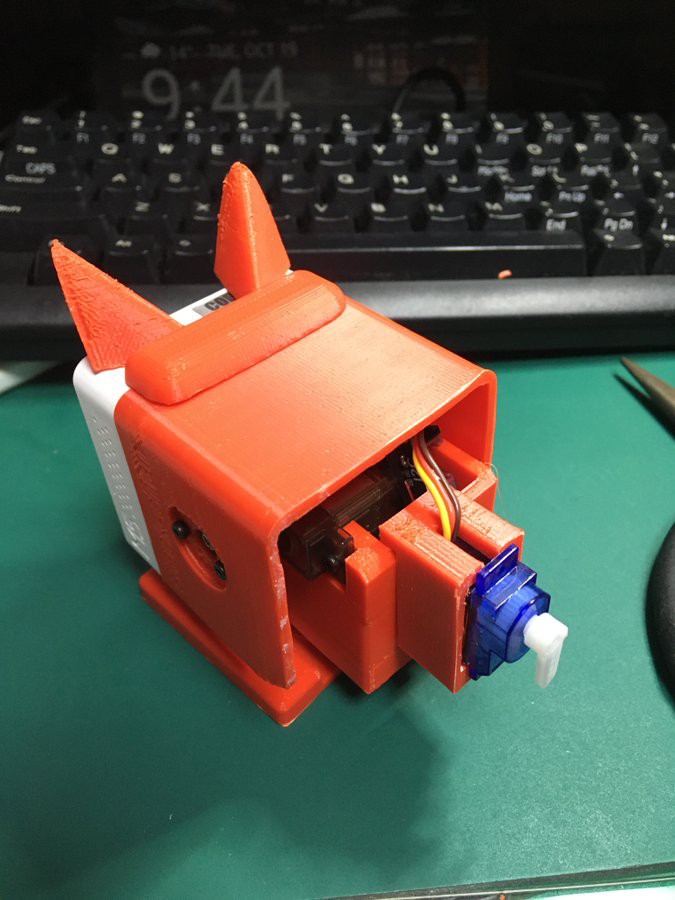-
Stack-chan is now OSHWA certified
11/18/2021 at 08:35 • 0 commentsStack-chan is certified as open source hardware by OSHWA!
![]()
OSHWA stands for Open Source HardWare Association, for more information on OSHWA's activities and the meaning of OSHWA, please see the following page.
https://www.oshwa.org/about/Stack-chan's page can be found at
https://certification.oshwa.org/jp000014.html
To be honest, OSHWA is not well known in Japan; Stack-chan is only the 14th certification in Japan, and I only became aware of its existence after I started developing Stack-chan. In fact, the culture of open source hardware is spreading in Japan, especially with homemade keyboards.
One of the benefits of certification is that it proves that you meet the requirements for documentation and licensing as an OSHW, and having your name on the list and being searchable should help spread the word about your device.
The authentication process was surprisingly easy, as long as you met the requirements beforehand. I will be writing a blog to encourage Japanese makers to register as well.
![]()
-
Hooray!
11/07/2021 at 13:53 • 0 comments![]()
Entries to the final round of HackadayPrize are now closed. What does this mean? It means that today is the start of another day of development!
Now, I have the following items in my backlog that have a high priority
- SG-90 servo version of the servo bracket that can be snapped into place
- Modifying the circuitry to improve stability and safety for distribution of the board and case
- An attractive application that demonstrates the ability of "swarm robots to communicate.(I wish I could shadow myself as the mechanical, circuit, and software person!)
The first step was to implement the software part which had been not ready in time for the contest deadline. We further improved on the previous FaceSync demo to make a cute cheerleader robot.
The rules are simple. When the user strikes a pose that says "hooray!", the robot shouts with joy.
Google MediaPipe provides a variety of ready-to-use recognition models for developers who want to easily use the results of deep learning. This time I used hand position and posture estimation as well as face. This application calculates if the hand position is higher than the top edge of the face to determine if the user is doing a "Hooray! The robots cheer when they detect the rising flag.
![]()
Think about the number of robots; wouldn't it be more interesting and energizing to have three robots than one robot answering? And what will be the effect when the number of robots increases to 10 or 20? Isn't that exciting?
There is no need to worry about performance. Since the cheering voice is stored in the M5Stack beforehand, the WebSocket payload is very small. Even if the number of robots increases, there will be no performance degradation.
Both the facial recognition web application and the Stack-chan cheering squad have their sources available on GitHub.
The possibility of "swarm robot interaction" like this application is something I will continue to pursue personally. Hopefully the robot army won't turn against us before then!
-
A short summary of our achievements with Stack-chan
11/07/2021 at 05:17 • 0 commentsThe deadline for HackadayPrize 2021 is fast approaching.
Thanks to your help, I was able to post the video and I was able to fulfill all the mandatory requirements of the contest. In my video I put speech in Japanese but it has also English subtitles. Glad if you watch it.
Finally, this post will summarize the results of the last six months since Stack-chan was released to the public.
Implementing the robot
I have released the first version of Stack-chan.
I created the robot's exterior that is easy to build with less screws.
I built pan-tilt control board compatible with different kinds of motor(TTL serial/ PWM) and development module (M5Stack Basic/Go/Fire/CORE2)
I implemented features that form the basis of Stack-chan's communication.
- A motor driver for serial servos
- Avatar library with replaceable images
- Basic motion control and communication functions
- Text to Speech
- Face orientation and eye control
- Facial expressions (smiling)
- Lifelike breathing and blinking- Architecture that can separate firmware into basic framework and user application
I have implemented several sample applications that demonstrate the capabilities of Stack-chan.
- Tracking the user's face (in combination with UnitV2)
- Talking at the push of a button- Replacing a face
-A "mimicry game" using multiple Stack-chansI put together a README with Stack-chan parts, schematics, exterior data, and information on how to make Stack-chan, so that others could make Stack-chans.
Community Activities
The Stack-chan community was born, full of wonderful contributions and challenging minds.
Community members are actively exchanging information on a daily basis, and many examples are being created.
The examples include the following challenging elements- Conducting and monetizing third-party workshops with original learning materials
- Transforming Stack-chan by modifying its exterior data
- Use cases in actual event displays. Catching the attention of participants
- Integration with AI services such as Siri, Google Translate, and Alexa
- Build-in walking functionalityIn addition to thefive pull requests I got from the members,
I made improvements to the exterior, circuitry, and software based on the feedback we received through these activities.Join the community today! Our base of activity is Twitter, and you can join right away by using the official hashtag #stackchan.
Through the development of Stack-chan, I will continue to do my best to realize a "life with robots", a life in which robots not only provide a variety of support in daily life, but also enable us to enjoy the interaction itself. -
From the community #8: One small step for Stack-chan, but...
11/06/2021 at 18:00 • 0 commentsのむむ (@umumon) is a professional robotics engineer who has dedicated his life to building robots of all kinds.
He made Stack-chan walk. No, I'm not kidding. I couldn't believe that such a small robot could walk either until I saw it in action.
![]()
He kept Stack-chan's appearance the same, but revamped its internal mechanism and added the ability to walk.What happens when Stack-chan, which is cute even when stationary, starts walking? How could it not be cute!
What makes Stack-chan different from other small bipedal robots is that it has a walking function and also realizes pan-tilt movement. This means that Stack-chan's original head-shaking function can be used. And did you hear it say "Yoisho(grunts)" as he walked step by step, showing his respect for Stack-chan's kawaii principles?
I would like to give him the words, "One step for Stack-chan, one giant leap for whole Stack-chan community"
Looking inside, you can see that it is an amazingly complex system.
![]()
He used the RS204MD, which is a serial servo even smaller than the RS304MD. He also modified the circuit board to fit this connector.
![]()
The backpack on his back is for storing batteries, but it also serves as a weight for shifting the center of gravity necessary for walking.
![]()
Various other improvements have been made to the exterior. The modification of Stack-chan's case that I introduced earlier was inspired by his walking Stack-chan. For example, a frame that allows the servos to be snapped into place without screws.
The data for his walking Stack-chan is available (in 3D printable form) on GitHub. The number of parts has increased to over 40, but if you are a skilled Maker, why not give it a try?
Now, I have introduced eight examples with permission from the user community. If you missed any of them, please my project log archives! There are many more Stack-chans being created on Twitter (by over 30 Makers in the first six months, with over 200 tweets). I myself did not expect Stack-chan to become such a big movement, and I can't predict how it will turn out in the future. However, I do believe that the concept of "an open community raising one robot as a whole" will gradually come true. I enjoy following the tweets every day, and the more I see unexpected ways to use the robot that I hadn't thought of, the more motivated I get to develop it. I'm sure tomorrow will be even better.
A summary of the examples can be viewed on Togetter. You can check out the latest tweets from the official Stack-chan hashtag on Twitter, so please take a look. What would you do with Stack-chan? If you're interested, try making one!
-
From the community #7: Stack-chan becomes a science teacher
11/06/2021 at 16:20 • 0 commentsnamako (@KantenNamako) is an Professional Engineer in Biotechnology and Bio-engineering; Ph.D. in Biology. He loves Robotics, animals, especially for birds.
He first noticed the eye-catching movement of Stack-chan. He used Stack-chan as a display to show the values of sensors, in a booth for teaching about sensing at "Chiba science festa". Stack-chan was so effective in attracting visitors that he was able to keep the children occupied until the end of his explanation.
![]()
(https://twitter.com/KantenNamako/status/1446680277653155841)
Stack-chan is equipped with a single I2C Grove port, but it is possible to connect multiple sensors by using an I2C hub unit like this.
![]()
(https://twitter.com/KantenNamako/status/1446073305933357056)
As simple as Stack-chan itself is, it can be equipped with additional sensors and gimmicks for various kinds of play. The work below combines a 3D printed rubber band gun with Stack-chan.
(https://twitter.com/KantenNamako/status/1452654062948601859)
This super-cool robot makes a "blam!" sound and flash as the rubber bands are fired. All these effects is written in UIFlow, M5Stack's visual programming platform.
Full Armor Stack-chan...shortened to Full Stack-chan ;)
He is also developing a wing unit to be attached to the Stack-chan.
![]()
(https://twitter.com/KantenNamako/status/1455880713849294849)
And the owl face. He plans to make Stack-chan into a smart bird robot.
![]()
(https://twitter.com/KantenNamako/status/1456884566782742531)
He is using Stack-chan in this way to develop a learning platform robot for kids. He plans to show it off at a science event next year. Can't wait to see what it turns out to be!
-
From the community #6: Six Stack-chans in a row!
11/05/2021 at 08:07 • 0 commentshirot78 (@hirot78) is an IT infrastructure consultant who specializes in cloud computing. He was also one of the first makers to try out Stack-chan.
![]()
(https://twitter.com/hirot78/status/1441561937326723079)
...Six of them! Even I, the original creator, have never made that many Stack-chans at once. He used my documentation as a reference to assemble and mount the parts himself, and successfully built all six.
![]()
(https://twitter.com/hirot78/status/1443822629635256320)
In addition to the SG-90 case, he used my Stack-chan board and ModdableSDK-based JavaScript firmware.
The firmware was not yet SG-90 compatible, but he implemented the SG-90 driver on his own.![]()
(https://twitter.com/hirot78/status/1436203420839415822)
![]()
(https://twitter.com/hirot78/status/1437728684484354050)
There are several variations of the M5Stack module. He scrounged up all the M5Stacks in the house to complete his robot, which included versions of M5Stack Basic, M5Stack Gray, and M5GO. I am happy to see all versions working.
![]()
(https://twitter.com/hirot78/status/1446600296554065922)
His 4 year old son also held one of these devices and played with it until the batteries ran out.
![]()
(https://twitter.com/hirot78/status/1444266552816140292)
This video is from a Stack-chan meeting.
(https://twitter.com/hirot78/status/1446600690499919873)
See there is one robot whose servos are vibrating in small increments? He describes this child as having "unique movements", which may be a result of the fact that he built it with his own hands and became more attached to it than a ready-made robot.
-
From the community #5: "Stamp-chan" and the tiny robot movement
11/05/2021 at 05:41 • 0 commentsNochi (@shikarunochi) is one of the biggest fans of M5Stack, and is also known as a lover of very small retro PC figures.
https://shikarunochi.matrix.jp/
After he made his first Stack-chan, he decided to take on an additional challenge. That is "Stack-chan in miniature".
Is it really possible to make a miniature version of Stack-chan? Even Stack-chan itself is only about 50mm cubic? The answer is yes! That's what this "Stamp-chan" is all about.
![]()
(https://twitter.com/shikarunochi/status/1452568711307546625)
Stick on a sticker that resembles the M5Stack's control panel and... tada!!
![]()
(https://twitter.com/shikarunochi/status/1452632311825010688)
Stamp-chan is driven by a small ESP32-PICO-D4 based module "M5Stamp" instead of M5Stack.
Smaller alternatives are also used for the servo motor and display, respectively.
Nochi's series of tweets shows his effort to make the exterior as small as possible.![]()
![]()
(https://twitter.com/shikarunochi/status/1451889003397980167)
Since I published Stack-chan, there has been a small movement in the Japanese Maker community to make small, cute, tabletop-sized robots. Some of them use other modules in the M5Stack series, such as M5Stamp and M5ATOM, and some others use other modules with displays, such as WioTerminal and even micro:bit. Check out myStack-chan tweet list for more inspired work!
-
From the community #4: "DIY"ed SG-90 Stack-chan!
11/04/2021 at 01:16 • 0 commentsTomorrow56 (@tomorrow56) is a professional electronics engineer, who sells a lot of original PCBs as ThousanDIY, and he is also the originator of the SG-90 compatible version of the stackchan.
![]()
(https://twitter.com/tomorrow56/status/1415328179695194114?s=20)
When I built the first version of the Stack-chan board, I wired the pins for small hobby servos driven by PWM, but since I was mainly using TTL serial servos, this support was only "just in case". The task of "developing a case and firmware to support PWM servos" was buried at the bottom of the backlog.
He was one of the first to modify my case and make an SG-90 version of the stackchan. He then submitted a pull request to my repository. (I found out later that this was his first pull request! I'm glad I could contribute to his great contribution to OSS.)
Since SG-90 servo motors are readily available and inexpensive, many other makers today use his case to build their Stack-chans.
He also gave me feedback on improving the board. The SG-90 does not have built-in speed control like serial servos, and it has a large peak current when changing angles rapidly. Therefore, the voltage drop sometimes caused the M5Stack to lose power. This voltage drop can be mitigated by connecting the battery to the 5V line via a diode.
After this, he created many applications using the SG-90 version of Stack-chan.
He created a "discomfort index meter" on the Stack-chan to cope with the hot Japanese summer. He demonstrated the use case of Stack-chan as a small indicator.
He also incorporated the Stack-chan into a quadruped robot. Since Stack-chan has a pan-tilt movement, it is also ideal for use cases in robot faces.
Last but not least, knowingly or unknowingly of the recent Stack-chan movement, M5Stack is also working on a small bipedal robot kit. Ahead of that, He is developing a robot that incorporates Stack-chan and adds our own bipedal capabilities.
![]()
(https://twitter.com/tomorrow56/status/1455847065318092803)
Who will win the development race against the official M5Stack? We'll be keeping an eye on this one!
-
Fewer Screws, Better User Experience
11/02/2021 at 17:50 • 0 commentsI was recently impressed by the work of a finalist in "Redefine Robotics". The robot "Tardygrade" is made up of mostly interlocking parts that fit together like a puzzle, and uses very few screws. Stack-chan, on the other hand, uses up to 24 screws in total. I wondered if I could make this a little easier for young hackers who are starting to develop robots.
![Such screws... Such screws...]()
One part of Stack-chan's exterior that requires a particularly large amount of screwing is the fixing of the servo motors. This was based on the way that humanoid robot kits on the market are fastened, but I figured that for a small body like Stack-chan to have pan-tilt movement, it would not need such a strong fastening. So instead of using screws to fix the servomotor, I decided to use a structure where the servomotor itself is fixed by snapping it into the frame.
The following is the bracket that I improved after more than a dozen attempts.
![]()
To make the servo motor snap into place, the claw part of the bracket is shaped like a seat with curved corners, like the Fritz Hansen Seven Chair. This structure makes it possible to open the claw and insert the servo motor without breaking the bracket, even when using a rigid filament such as PLA. This means that the four screw tightening per motor is reduced to zero.
*Note that when printing with FDM, the stacking direction should be perpendicular to the curve.
![Snap! Snap!]()
I have also improved the fixing of the servo horn and shell. The last version used three or more screws, but by adding a hole on the shell side that meshes with the horn's protrusion, it can now be fixed with a single screw.
Now let's compare the old (left) and new (right) Stack-chan.
![]()
![]()
Through these improvements, I finally able reduced the number of screws tightened from 24 to a minimum of 6!
I included a number of other minor modifications in this version, such as eliminating the gap between the M5Stack and the shell, and making the hole for the Grove connector on the top of the body opt-in (which can be cut out later with nippers). One of the improvements that developers will love is the Lego-compatible holes on the side of the body, as many modules in the M5Stack series use Lego Technic-compatible pins. This hole will also help to fix the official sensor unit. And of course, the Lego bricks!
![]()
You can view the STL and STEP data in the GitHub branch, which I will be merging into the main branch soon!
-
From the community #3: Welcome to Stack-chan zoo
10/29/2021 at 08:00 • 0 comments![]()
紅樹 タカオ (@mongonta555) is an expert in both software and hardware and is on his way to building a little fluffy robot park.
He was inspired by tweet from @robo8080 to start building cat-ear options for Stack-chan.
![]()
猫耳のパーツ化、、、かなり難しい(;´・ω・) pic.twitter.com/6TwwlJaIvg
— 紅樹 タカオ💉💉 (@mongonta555) August" class="redactor-linkify-object">https://twitter.com/mongonta555/status/1425748196060385284?ref_src=twsrc%5Etfw">August 12, 2021At first, the design was difficult, but thanks to his openness about the process, he was able to get advice from other makers and gradually refined it.
![]()
たなかさんの教えに従い外側に向けてみた( ・ω・)
— 紅樹 タカオ💉💉 (@mongonta555) August" class="redactor-linkify-object">https://twitter.com/mongonta555/status/1425830406230708235?ref_src=twsrc%5Etfw">August 12, 2021
印刷は明日ですな(`・ω・´)https://t.co/VG8cPYy1rm pic.twitter.com/B1hQCiqegKIn the end, he finally succeeded in creating a removable cat ear option!
![]()
赤と黄色の猫耳スタックチャン('ω')#スタックチャン #M5Stack pic.twitter.com/ql8CYi1FxE
— 紅樹 タカオ💉💉 (@mongonta555) October" class="redactor-linkify-object">https://twitter.com/mongonta555/status/1447858958182453253?ref_src=twsrc%5Etfw">October 12, 2021After ears, guess what's next? Yes, tails! He even went on to make an extra bracket for the tail!
![]()
#スタックチャン 用しっぽアダプター印刷完了
— 紅樹 タカオ💉💉 (@mongonta555) October" class="redactor-linkify-object">https://twitter.com/mongonta555/status/1450443251899461634?ref_src=twsrc%5Etfw">October 19, 2021
しっかりサーボを固定できました('ω') pic.twitter.com/0rEY67ArnZThe tail is equipped on top of a third servo motor, so it moves. Wow.
![]()
(https://twitter.com/mongonta555/status/1450763971175223298)
Since I made the 3D data available early on in the development of Stack-chan, many community members have been modifying the case and adding optional parts like his works.
Among them, He contributed by creating a case that is compatible with the official module of the M5Stack, which is used in the example above. Although it takes up some extra space compared to the dedicated Stack-chan board, the ability to divert the official module makes it even easier to assemble, making it a useful reference for other community members.
His modified version of the data is available as a pull request in the repository (to be merged in the future).
Stack-chan - JavaScript driven super-kawaii robot
An easy-to-build and companion robot for everyone
 Shinya Ishikawa
Shinya Ishikawa
